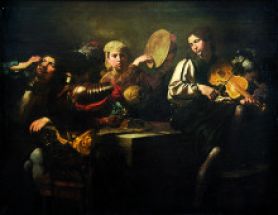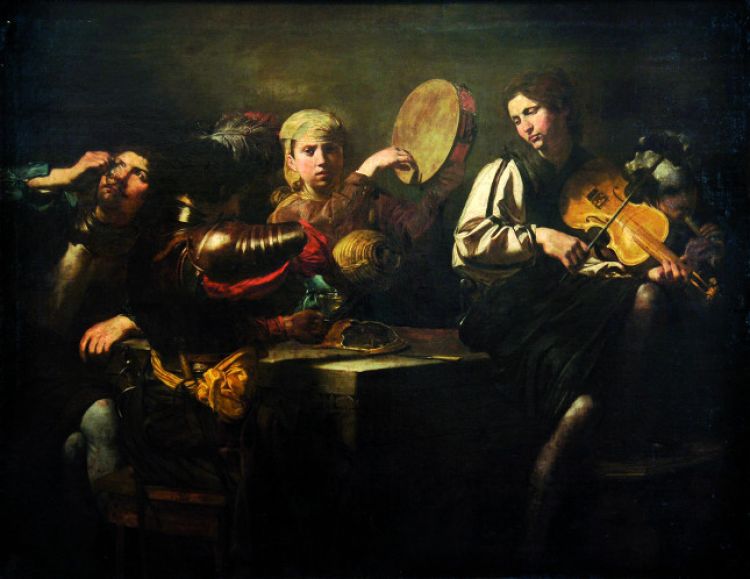Musicians and soldiers

It was the Rome of 1626 that Valentin de Boulogne painted these “Musicians and soldiers”. The French artist, like many of its European peers, settled in this mythical city around 1611. Here he dedicated himself fully to his art and became one of the major painters of the second wave of the Caravaggist style.
This work is set in the middle of a tavern and depicts the pleasures of drink, music and love. It is characteristic of the painter’s secular repertoire. The painting has a large format like that of his historical paintings which ennobles this genre scene. Observe how the characters are portrayed from the waist up. Notice the contrasting and violent lighting: it’s a good example of the famous and iconic chiaroscuro of the work of Caravaggio and his followers.
In this painting, the framing and lighting serve to give life to the characters’ psychology. Each figure appears strangely isolated, unrelated to those around it. There is silence at the heart of Valentine’s melancholy poetry. The violinist you can see on the right expresses this gravity perfectly. Where so many artists would limit themselves to restoring a banal scene, Valentin flees the anecdotal and explores his characters’ changing spirits with finesse. True enough, the adventurous life evoked in this painting is also not too far from his own. He lived life to the limit, often frequenting prostitutes and he died from a fall into an ice-cold fountain after drinking too much in a tavern probably a lot like this one.
